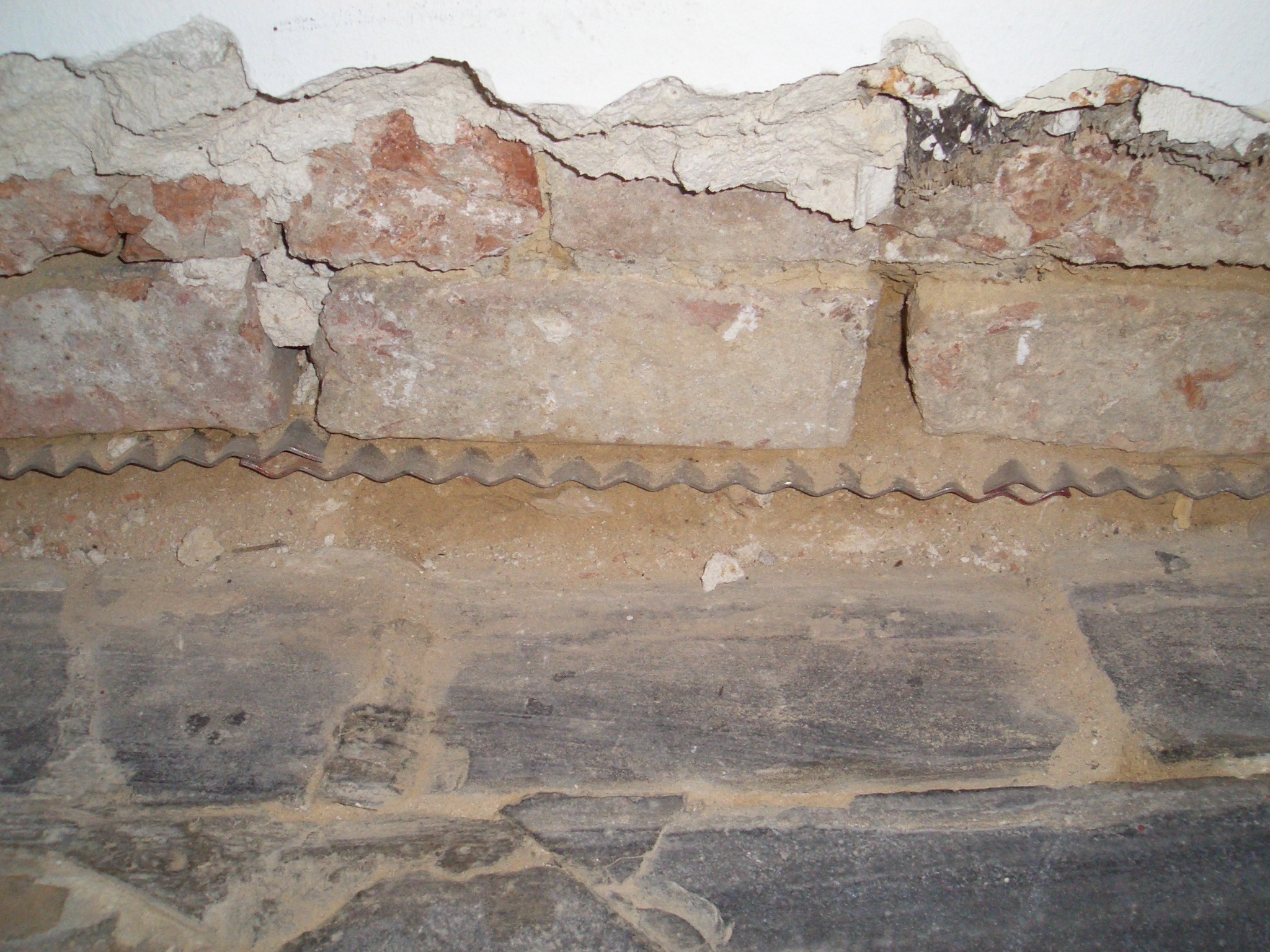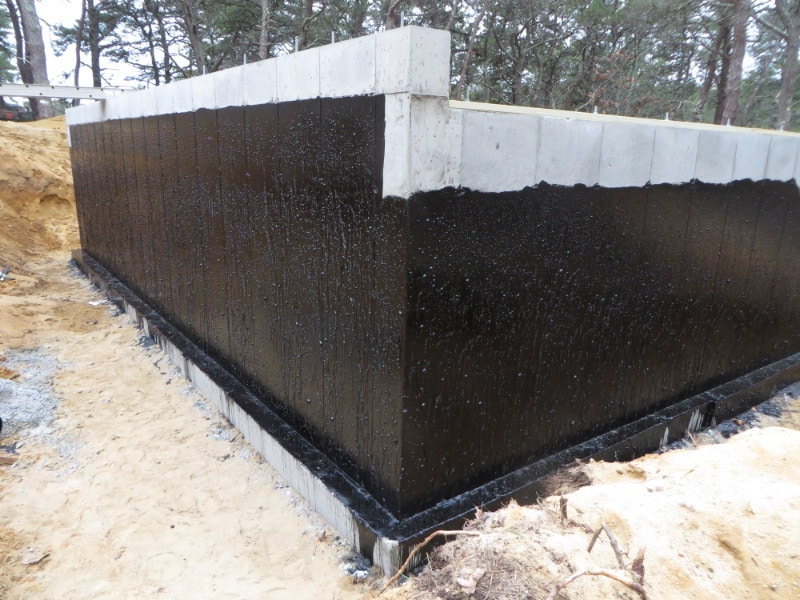Solving condensation problems permanently with mould treatment newcastle
Exploring the Various Techniques and Solutions for Effective Damp Proofing
Moisture in buildings postures significant challenges to both structural stability and indoor air top quality. Numerous methods and options have actually arised to battle this pervasive problem. From standard damp-proof membrane layers to ingenious chemical therapies, each approach uses unique advantages. Recognizing these alternatives is important for reliable wetness control. Nonetheless, selecting the ideal service relies on specific building conditions and needs, motivating more expedition into one of the most effective moist proofing approaches available.
Understanding the Causes of Dampness
Moisture can arise from different resources, comprehending these causes is crucial for reliable removal. Frequently, moisture originates from 3 primary sources: increasing moist, penetrating damp, and condensation. Rising moist happens when groundwater takes a trip up via porous products, such as block or rock, commonly as a result of an absence of an effective barrier (mould removal newcastle). Passing through damp is usually brought on by outside aspects, including roofing leaks, defective seamless gutters, or harmed walls, permitting water to penetrate a building. Condensation, on the various other hand, arises from excess dampness airborne, often worsened by inadequate air flow and temperature level distinctions, resulting in water droplets basing on surface areas. Identifying these underlying concerns is necessary, as each sort of wetness requires a customized approach for removal. Correct analysis assists in establishing the most efficient options, ultimately safeguarding the structural stability of a structure and enhancing indoor air high quality
Typical Damp-Proof Membranes

Chemical Damp-Proofing Solutions
Chemical damp-proofing services supply an innovative method to avoid dampness intrusion in buildings. These approaches commonly involve the application of fluid chemicals that permeate masonry and create an obstacle versus rising wet. Typically made use of chemicals consist of silanes, siloxanes, and various other water-repellent representatives that react with surface materials to create a hydrophobic layer.The application process usually requires boring openings right into the wall surfaces, infusing the chemical remedy, and allowing it to heal. This method is particularly advantageous for older structures where standard damp-proof membranes might be not practical. Chemical damp-proofing can be less disruptive and more cost-efficient than extensive renovation projects.While reliable, these solutions depend on appropriate application and ecological problems for peak efficiency. damp specialist newcastle. Normal upkeep and tracking are vital to assure the durability of the damp-proofing treatment. In general, chemical damp-proofing represents a functional choice for securing buildings versus moisture-related damage
Dental Caries Wall Building Techniques
Tooth cavity wall construction strategies use various benefits, specifically in wetness control and energy performance. By including an air gap in between 2 layers of stonework, these walls successfully reduce water ingress while improving insulation. This combination not just shields structures from dampness however likewise adds to decreased energy usage.
Advantages of Tooth Cavity Wall Surfaces
When considering effective moist proofing methods, the advantages of cavity walls attract attention prominently. Cavity wall surfaces include 2 separate layers, developing an air void that efficiently minimizes moisture infiltration. This design reduces the risk of moisture, as the outer wall surface functions as an obstacle against rain and water access. In addition, dental caries walls improve thermal insulation, which contributes to energy effectiveness by lowering warmth loss. They additionally give sound insulation, assisting to develop a quieter indoor setting. The air void enables for ventilation, which aids in wetness control and reduces the chance of mold development. These benefits not only enhance the overall comfort of a building but additionally add to its long life and architectural stability.
Wetness Control Approaches
Efficient dampness control techniques are essential in dental caries wall building and construction to assure lasting defense against dampness. One main technique entails the incorporation of weep openings, which assist in water drain from the cavity, stopping accumulation. Additionally, making use of breathable membranes can assist handle moisture degrees while allowing entraped vapor to get away. Appropriate positioning of insulation is also important, as it should not block drain paths. Ensuring that the external fallen leaves of the cavity wall are constructed with waterproof products enhances total sturdiness. Routine upkeep checks are vital to determine any type of clogs or damages early, securing the structure's stability. Ultimately, a mix of these strategies forms a durable defense against dampness breach in dental caries wall surfaces.
Insulation and Power Efficiency
Insulation plays an important duty in enhancing power efficiency within cavity wall surface building and construction. By incorporating insulating materials, these walls create a thermal obstacle that decreases warmth loss and minimizes power consumption. Effective insulation not only helps keep a stable indoor temperature but additionally minimizes the danger of dampness, as it prevents condensation within the wall tooth cavity. Different techniques, such as the use of rigid foam boards or mineral wool, can be utilized to achieve excellent insulation efficiency. In addition, correct installment is important to ensure that spaces and spaces are minimized, which can or else jeopardize energy effectiveness. Ultimately, a well-insulated tooth cavity wall surface contributes significantly to overall sustainability and decreases heating & cooling prices for house owners.
Exterior Damp Proofing Methods
External moist proofing techniques are vital for securing structures from moisture seepage. 2 efficient techniques consist of the application of waterproof membranes and the installment of French drains. These solutions aid mitigate water build-up and protect the honesty of structures.
Waterproof Membrane Layer Application
While various approaches exist for preventing wetness access, the application of waterproof membranes stays a very reliable outside damp proofing technique. These membrane layers are usually made from products such as polyethylene, rubber, or modified bitumen, offering a robust obstacle against water penetration. The installment process entails applying the membrane to the exterior surfaces of foundations or walls, making sure full coverage to stop leakages. Appropriate get more info adhesion and sealing at joints are important to taking full advantage of effectiveness. Water resistant membranes can be applied in different forms, including fluid finishes and sheet membranes, allowing for versatility based upon the specific requirements of the framework. This approach not only protects structures from wetness but likewise boosts their long life and architectural stability.
French Drain Installation
One effective technique for taking care of groundwater and avoiding wetness buildup around a structure's foundation is the installation of a French drainpipe. This drainage system contains a trench loaded with gravel and a perforated pipe that redirects surface area water away from the foundation. Proper installment requires careful preparation, making certain that the drain slopes away from the framework to facilitate excellent water circulation. Furthermore, the location of the drain is vital; it ought to be placed in locations susceptible to pooling or excess wetness. Routine maintenance, including clearing up debris from the gravel and making certain the pipe remains unhampered, is crucial for long-lasting effectiveness. Ultimately, a well-installed French drain can greatly decrease the danger of water-related problems in foundations and basements.
Inside Waterproofing Strategies
Interior waterproofing approaches are crucial for safeguarding a structure's interior from dampness infiltration and potential water damage. These approaches generally entail the application of specialized products and techniques created to create a dampness barrier within the framework. One usual method is the use of water resistant finishes or sealers on walls and floorings, which stop wetness from penetrating surfaces.Additionally, installing interior drainage systems, such as sump pumps, can efficiently manage water accumulation in basements and creep areas. Another method involves the use of vapor obstacles, which are mounted to inhibit dampness movement from the ground into living spaces.Moreover, attending to any fractures or voids in wall surfaces or structures with proper sealers ensures a complete protection versus water breach. By implementing these interior waterproofing methods, homeowner can substantially decrease the threat of mold growth, architectural damage, and various other moisture-related problems. Correct execution of these strategies is essential for long-lasting security and structure integrity.
Normal Maintenance and Evaluation Practices
Regular upkeep and examination methods are vital for assuring the lasting performance of moist proofing solutions in any kind of structure. Routine checks allow homeowner to determine early indicators of moisture breach, such as peeling paint, mold growth, and musty odors. These signs can indicate underlying problems that require immediate attention.Inspections must be conducted at the very least each year, concentrating on vulnerable areas like basements, creep spaces, and exterior walls. Throughout these assessments, property proprietors must examine sealants, drain systems, and ventilation to validate they function correctly.Additionally, preserving seamless gutters and downspouts is important, as clogged up systems can bring about water buildup near the foundation. Executing a routine maintenance schedule, along with prompt repair services, can significantly extend the life-span of moist proofing procedures and shield the architectural honesty of the building. Proactive actions ultimately add to the total wellness and safety and security of the living environment.
Frequently Asked Questions
The Length Of Time Does Damp Proofing Typically Last?
The duration of wet proofing performance varies, generally lasting between 20 to half a century. Elements such as application high quality, environmental conditions, and upkeep methods greatly influence the long life of the moist proofing therapy.

Can I Damp Evidence My Home Myself?
The specific pondered the usefulness of do it yourself damp proofing. With proper research study and the ideal products, it is feasible. They likewise recognized the value of specialist advice to ensure durable effectiveness and avoid future issues.
What Are the Indications of Inefficient Damp Proofing?
Indications of ineffective wet proofing include persistent mildewy smells, noticeable mold growth, peeling paint, damp spots on wall surfaces, and wood decay - damp removal newcastle. Home owners ought to resolve these concerns immediately to protect against additional damage and wellness worries
Does Damp Proofing Affect Indoor Air High Quality?

Just How Much Does Specialist Damp Proofing Expense?
Specialist wet proofing prices vary considerably, typically ranging from $1,000 to $5,000 depending on the residential or commercial property's dimension, the degree of the moist problem, and chosen methods. Each scenario requires a customized evaluation for exact pricing. Generally, moisture originates from 3 main resources: increasing moist, passing through damp, and condensation. When considering efficient wet proofing methods, the advantages of cavity walls stand out plainly. Exterior wet proofing approaches are important for shielding frameworks from wetness seepage. While numerous techniques exist for protecting against wetness access, the application of water resistant membranes continues to be a highly efficient exterior damp proofing technique. Indicators of ineffective moist proofing include persistent moldy smells, visible mold and mildew development, peeling paint, damp patches on walls, and wood degeneration.